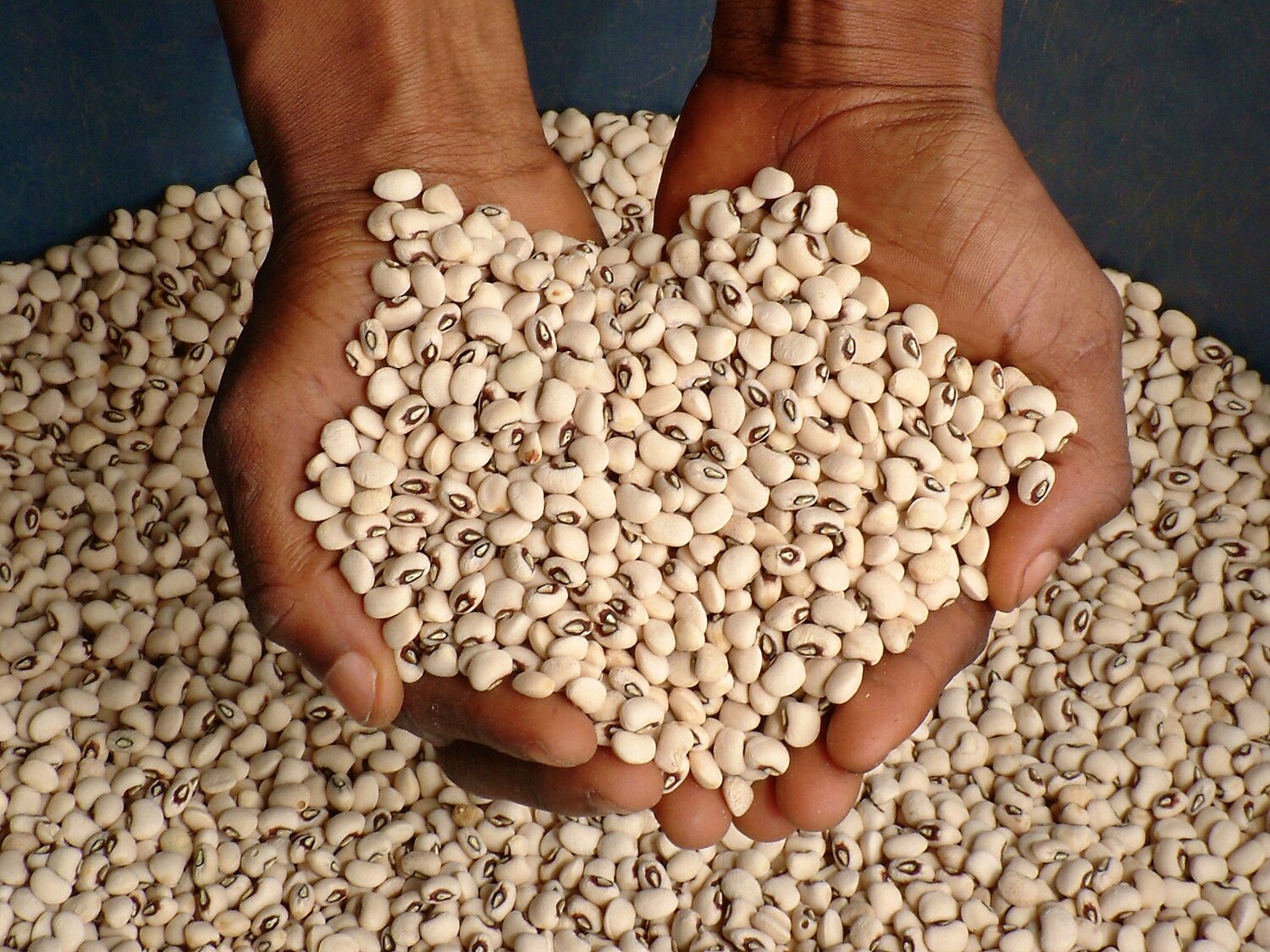Cowpea
Why cowpea?
Cowpea [Vigna unguiculata (L.) Walp] is a multipurpose legume crop cultivated around the world, especially in semi-arid areas. Grown on more than 11.5 million hectares in Africa, Southeast Asia and some countries in the Americas, cowpea is the third most important pulse worldwide. It is widely planted in semi-arid regions because of its ability to produce in dry and hot conditions. Cowpea seeds are highly nutritious, thanks to a high protein content (c. 25%). Its leaves are an important food source for some cultures in Africa. It is also used for animal feed and green manure.
The species includes 11 sub-species and many relatives, some grown as minor legumes and forage crops.
What we achieved
Collecting
- 76 seed samples of eight cowpea crop wild relatives were collected from seven countries: Ethiopia, Ghana, Kenya, Nepal, Nigeria, Sudan and Vietnam.
Pre-breeding
- More than 270 cross-compatible wild relatives were evaluated for biotic and abiotic stress resistance/tolerance.
- The project identified 11 wild relatives with drought tolerance and 12 with heat tolerance. It also identified 17 cultivated lines with drought tolerance and 14 with heat tolerance.
- It also identified 17 recombinant inbred lines (derived from a cross between a wild relative and a cultivated line) with drought tolerance, 13 with heat tolerance and 6 with superior aphid resistance. Several of these lines showed all three characteristics.
- Twenty accessions of wild Vigna spontanea are conserved in the International Institute of Tropical Agriculture (IITA) Genebank and National Centre for Genetic Resources and Biotechnology (NACGRAB), Ibadan, Nigeria
- Sixty-four F6 lines have been sent to each of Institut de l'Environnement et de Recherches Agricoles (INERA), Burkina Faso, Institut National de la Recherche Agronomique (INRAN), Niger, and NACGRAB, Nigeria and have been deposited in the Genetic Resources Unit of the International Institute of Tropical Agriculture (IITA) for conservation and further distribution to any requestor under an SMTA.
- Data generated from the project activities were compiled and uploaded into Germinate.
- Seed of 135 local cowpea lines and 50 cowpea wild relatives collected in Niger was increased and available for sharing under SMTA.

Project partners
Collecting
- Ethiopian Biodiversity Institute, Addis Ababa, Ethiopia
- Plant Genetic Resources Research Institute, Accra, Ghana
- Kenya Agricultural and Livestock Research Organization, Nairobi, Kenya
- National Agriculture Genetic Resources Center, Khumaltar, Nepal
- National Centre for Genetic Resources and Biotechnology, Ibadan, Nigeria
- Agricultural Plant Genetic Resources Conservation and Research Centre, Wad Medani, Sudan
- Plant Resources Center, Hanoi, Vietnam
Pre-breeding and evaluation
Lead Institute: International Institute of Tropical Agriculture, Ibadan, Nigeria
Partners:
- Institut de l'Environnement et de Recherches Agricoles, Ouagadougou, Burkina Faso
- Institut National de la Recherche Agronomique, Niamey, Niger
- National Centre for Genetic Resources and Biotechnology, Ibadan, Nigeria
Cowpea key collections, materials and data
Cowpea collections
- The largest cowpea collection is conserved at IITA, Ibadan, Nigeria.
- All 76 seed samples of cowpea crop wild relatives collected are conserved in the Millennium Seed Bank and 60 had been sent to the IITA genebank for multiplication, use and safety backup (December 2021).
- The Genesys PGR database also includes information about cowpea accessions in genebanks worldwide
Pre-breeding materials
- All pre-breeding materials and promising ILs are conserved in the genebanks at INERA, INRAN and NACGRAB as well as in the IITA genebank.
Data
- All data from the CWR cowpea pre-breeding and evaluation projects are available in the Germinate cowpea database
Cowpea stories
Crop Trust stories
-
Seed Collecting, Conservation and Collaboration in West Africa. https://www.croptrust.org/news-events/news/seed-collecting-conservation-and-collaboration-in-west-africa/. 27 January 2022.
- Cowpea: How to make a hardy crop even tougher. https://www.cwrdiversity.org/cowpea/. 19 May 2020.
Relevant publications
- Boateng, S.K., Aboagye, L.M., Egbadzor, K.F., Darko, R.K., Ameka, G.K., Ekpe, P., Kanton, R., Dogbe, W., Saaka-Buah, S. 2019. Collecting of crop wild relatives and minor crops in Ghana. Research in Agricultural & Veterinary Sciences 3(2): 89–95.
- Boukar, O., Abberton, M., Oyatomi, O., Togola, A., Tripathi, L., Fatokun, C. 2020. Introgression breeding in cowpea [Vigna unguiculata (L.) Walp.]. Frontiers in Plant Science 11: 567425. https://doi.org/10.3389/fpls.2020.567425
- Metwally, E., Sharshar, M., Masoud, A., Kilian, B., Sharma, S., Masry, A., Shaw, P.D., Raubach, S., Fiad, A., Rakha, M. 2021. Development of high yielding cowpea [Vigna unguiculata (L.) Walp.] lines with improved quality seeds through mutation and pedigree selection methods. Horticulturae 7(9): 271. https://doi.org/10.3390/horticulturae7090271

